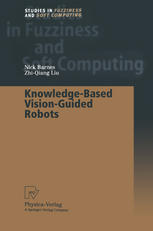

Most ebook files are in PDF format, so you can easily read them using various software such as Foxit Reader or directly on the Google Chrome browser.
Some ebook files are released by publishers in other formats such as .awz, .mobi, .epub, .fb2, etc. You may need to install specific software to read these formats on mobile/PC, such as Calibre.
Please read the tutorial at this link: https://ebookbell.com/faq
We offer FREE conversion to the popular formats you request; however, this may take some time. Therefore, right after payment, please email us, and we will try to provide the service as quickly as possible.
For some exceptional file formats or broken links (if any), please refrain from opening any disputes. Instead, email us first, and we will try to assist within a maximum of 6 hours.
EbookBell Team

4.1
50 reviewsMany robotics researchers consider high-level vision algorithms (computational) too expensive for use in robot guidance. This book introduces the reader to an alternative approach to perception for autonomous, mobile robots. It explores how to apply methods of high-level computer vision and fuzzy logic to the guidance and control of the mobile robot. The book introduces a knowledge-based approach to vision modeling for robot guidance, where advantage is taken of constraints of the robot's physical structure, the tasks it performs, and the environments it works in. This facilitates high-level computer vision algorithms such as object recognition at a speed that is sufficient for real-time navigation. The texts presents algorithms that exploit these constraints at all levels of vision, from image processing to model construction and matching, as well as shape recovery. These algorithms are demonstrated in the navigation of a wheeled mobile robot.